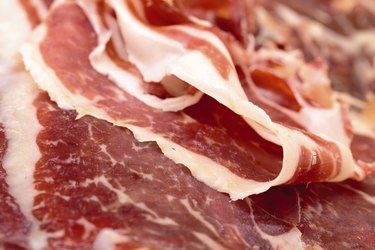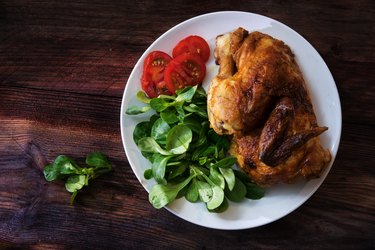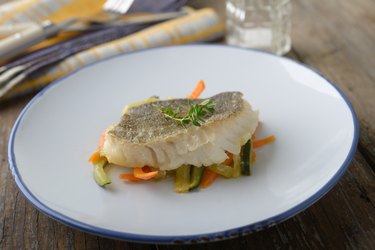Yes, you can absolutely deep fry cooked shrimp! I’ve done it many times in my kitchen, and when done right, it creates an amazing crispy exterior while keeping the shrimp tender inside. Here’s my complete guide on how to nail this cooking technique.
Quick Answer Summary
- Deep frying pre-cooked shrimp takes just 1-2 minutes at 350-375°F
- Focus on crisping the coating rather than cooking the shrimp
- Must thaw frozen shrimp completely before frying
- Proper breading is crucial for best results
Why Choose Pre-Cooked Shrimp for Deep Frying?
After years of experimenting with both raw and pre-cooked shrimp, I’ve found several advantages to using pre-cooked:
- Time-Saving: No need to peel, devein, or worry about proper doneness
- Less Mess: Pre-cooked shrimp has less moisture, reducing oil splatter
- Beginner-Friendly: More foolproof than starting with raw shrimp
- Better Flavor Absorption: Takes on seasonings really well
Essential Steps for Deep Frying Success
1. Preparation
- Thaw shrimp completely if frozen
- Pat very dry with paper towels
- Season well with your favorite spices
2. Breading Options
I’ve tried many coatings, and these work best:
Basic Flour Dredge:
- Seasoned all-purpose flour
- Simple and light
3-Step Breading:
- Seasoned flour
- Egg wash
- Panko breadcrumbs (my personal favorite for extra crunch!)
Light Coating
- Cornstarch or potato starch
- Perfect for a delicate crunch
3. Frying Process
Temperature: 350-375°FTime: 1-2 minutesOil types: Canola, vegetable, or peanut oilPro Tips from My Kitchen
-
Temperature Control: Use a thermometer! I learned this the hard way – wrong temp = greasy shrimp
-
Batch Size: Don’t overcrowd! I fry about 4-6 shrimp at a time
-
Oil Selection Stick with neutral oils. Trust me olive oil ain’t gonna work here
-
Storage These are best fresh but if you gotta store ’em
- Keep in fridge up to 2 days
- Reheat in oven at 350°F for 5-7 minutes
- Don’t refreeze!
Common Problems & Solutions
Had these issues? Here’s what worked for me:
Soggy Coating?
- Dry shrimp better before coating
- Check oil temperature
- Don’t overcrowd the pan
Rubbery Shrimp?
- Reduce frying time
- Watch temp closely
- Don’t reuse oil too many times
Perfect Pairings
Gotta have good dipping sauces! My faves:
- Cocktail sauce
- Spicy mayo
- Sweet chili sauce
- Tartar sauce
Health Considerations
Look, deep fried anything ain’t health food, but here’s how I make it a bit better:
- Use fresh oil
- Drain well on paper towels
- Serve with lighter sides
- Consider air frying as an alternative
The Bottom Line
Deep frying pre-cooked shrimp is totally doable and can be super delicious when done right. Just remember my key points:
- Proper thawing
- Good breading
- Right temperature
- Quick cooking time
Need more cooking tips? Drop a comment below – I love helping fellow home cooks nail their recipes!

Frying Cooked Shrimp: The Basics
The three most common ways of coating and frying cooked shrimp are buttermilk fried shrimp, breaded shrimp and battered/tempura shrimp. With all these you need to start with shrimp that are fully thawed and patted as dry as possible.
To make buttermilk fried shrimp, dip each shrimp in buttermilk, roll in seasoned flour until well coated, shake off any excess flour and then fry. Traditional southern fried shrimp recipes swap some or all of the flour for cornmeal.
To make breaded shrimp, roll the shrimp first in beaten egg, then in breadcrumbs, before frying. For a drier, crisper result, use Japanese-style Panko breadcrumbs.
For tempura-style shrimp, Americas Test Kitchen from KCET TV station says simply whisking this list of ingredients together gives the very best result (these quantities make four servings of fried shrimp batter):
- 1 1/2 cups unbleached all-purpose flour
- 1/2 a cup cornstarch
- 1 large egg
- 1 cup vodka
- 1 cup seltzer water
- Kosher salt to taste
Why Use Cooked Shrimp?
Though using raw shrimp is more traditional, frying cooked shrimp has quite a few advantages. For a start, its simpler, with much less preparation time: Theres no fiddly peeling or deveining of the seafood involved, for example. You also dont have to be worried about heating the shrimp to the right internal temperature to ensure food safety. This can definitely take the stress out of frying, as essentially you know the shrimp are good to eat as soon as they look ready.
When youre frying cooked shrimp, you do obviously have to take care as the shrimp can become rubbery and tough quicker. But this is where the crispy coating is a lifesaver — fried shrimp batter helps to retain moisture inside the shrimp, so toughness should not be a problem. This is particularly the case if you cook it at a high temperature, which means the batter will crisp up quickly.



The perfect fried shrimp recipe for any occasion!
FAQ
How do I cook shrimp that’s already cooked?
Just thaw them out, drain the water that comes out, dry them thoroughly and toss into the pasta sauce and warm them through for a minute or two. Frozen shrimp is pre cooked and ready to eat. Don’t heat the shrimps for more than a minute or two, just enough time to bring them up to temperature.
How long do shrimp take to deep fry?
How do you heat up shrimp that’s already been cooked?
Heat a skillet over medium-high heat and add a splash of water or olive oil. Place the shrimp in a single layer and sauté for 1-2 minutes until they’re heated through. This method works wonders for shrimp leftovers from one-pot garlicky shrimp like this recipe for Garlic Butter Shrimp with Sprite.
What are common mistakes when frying shrimp?
- Not Cleaning Shrimp Properly. The first and most frequently made mistake in cooking shrimp is not cleaning them properly. …
- Overcooking Shrimp. Overcooking shrimp is a common mistake that can negatively impact its texture and taste quality. …
- Cooking Frozen Shrimp Directly. …
- Not Peeling Shrimp.
